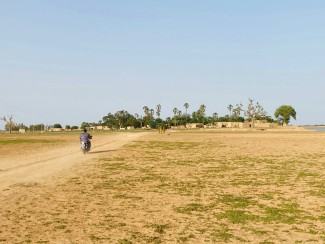For the 50th anniversary of the creation of the Organisation of African Unity (now the African Union), African leaders adopted the Agenda 2063: The Africa We Want– a vision for a prosperous Africa based on inclusive growth and sustainable development. One of the defining features of this agenda is the structural transformation of African economies towards achieving shared growth, decent jobs and economic opportunities for all.
So far, the structural transformation that shifts productive resources from agriculture and mining to manufacturing – which has helped many countries achieve greater prosperity – has bypassed most African countries. According to a recent International Monetary Fund report, the limited structural transformation in Africa has not translated into more jobs, because the manufacturing sector itself requires extensive reform.
Therefore, what Africa needs is a manufacturing renaissance, with more local value-addition that would create more and better-paid jobs, and contribute to fulfilling the aspirations of the Agenda 2063. It could make African countries become more resilient to economic shocks and less dependent on natural resource exports.
Africa can achieve this ambitious goal if it taps into available opportunities, while mitigating the challenges it faces.
There are already several positive signs. Overseas Development Institute datashow that African manufacturing production, exports and Foreign Direct Investment (FDI) have developed positively over the last decade. Between 2005 and 2014, manufacturing production within Africa more than doubled from $73 billion to $157 billion, growing 3.5% annually in real terms. Some countries, such as Uganda, Tanzania and Zambia, have achieved more than 5% annual growth in the recent past.
Overall, sub-Saharan African manufacturing exports almost tripled between 2005 and 2015 to more than $140 billion. A reduced reliance on the traditional OECD market is also clearly visible, with China and India now absorbing a major portion of African exports. In addition, intra-African trade is rising much faster than in the past. FDI in African manufacturing is increasing. Moreover, investment from other parts of Africa is now a significant source of FDI – representing a quarter of all FDI in Mozambique and Tanzania and more than 40% in Rwanda.
However, despite the overall increase in manufacturing, its share of GDP has remained subdued, hovering consistently around 10% in the past decade. Investment in infrastructure, from public, private, domestic and foreign sources, remains too low. There has been a significant effort to bridge the infrastructure gap, but annual investment needs in these sectors amount to approximately $90 billion per year for a decade.
Africa is enjoying a so-called demographic dividend – whereby fertility rates are falling, so the workforce is growing more rapidly than the population dependent on it, freeing up resources. This has the potential to transform African manufacturing.
According to The Economist, more than 80 million jobs are likely to relocate out of China due to growing wages. However, several Asian countries, where wages are still lower than in many African countries (for example in Bangladesh, Cambodia, Lao PDR, Nepal and Vietnam), can compete to bring these jobs to their countries.
At present, market access policies appear to favour African countries. Many benefit from preferential market access, such as the Everything but Arms Initiative of the European Union and the African Growth and Opportunity Act of the US. However, countries have to start taking full advantage of these opportunities, since they might not be extended for an unlimited time.
But many African producers still struggle to meet the regulatory requirements and standards necessary to enter overseas markets. Countries might benefit from tariff-free market access, but non-tariff barriers – such as health, safety and environment‑related standards – stop producers from these countries from entering new markets.
Improvements in the business environment – as measured by the World Bank's Doing Business Report – are clearly visible in several African countries. This includes least developed countries (LDCs), such as Malawi, Rwanda and Tanzania, with others such as Ethiopia and Uganda following suit. But since countries are competing to attract investment, African countries can be overtaken by faster-moving reformers. Only one African country, Kenya, featured in the top 10 countries for improving their business environment, according to the 2017 Doing Business Report.
These challenges can be overcome and an African manufacturing renaissance is within reach. But more needs to be done to embrace an agenda of enhancing its global competitiveness. Institutions, infrastructure, human capital and technology all need to be addressed.
Most African countries tend to rank below the global average on the Worldwide Governance Indicators. Indicators such as political stability, governance effectiveness, rule of law and regulatory quality are important prerequisites to developing a sustainable manufacturing sector. While institutional improvement takes time, African countries have to act quickly by using the available international support. The Enhanced Integrated Framework for the LDCs, for example, contributes to enhancing trade and investment-related institutional capacities. However, a transformative shift requires both political will and the ability to leverage the existing support.
Better infrastructure is key, not least because a reduction in trade costs would help African manufacturers integrate into global and regional value chains. Infrastructure deficits – both within the continent and within individual countries – are too wide to be met only through public funding, although funding is not the only issue here. Many emerging economies have successfully used "blended finance" for their infrastructure needs, where investments are often lumpy and the gestation period is high. Africa can consider using this type of finance to close the gap.
Investment in human capital, particularly in higher education and training, not only helps African countries excel in manufacturing production, but also to move up the value chain. The production of fairly low-tech processing of agriculture goods, textile and leather goods may help towards poverty alleviation but will not create a permanent dent on poverty. Therefore, the efforts made so far in this area need to be redoubled.
Finally, technology is a key driver of competitiveness, where African countries lag far behind their South Asian counterparts. Data is limited but suggest African countries spend less than 0.4% of GDP on research and development; compared with the south and west Asian average of 0.7%; and a global average of 1.7%.
It is not a new argument that these four pillars of institutions, infrastructure, human capital and technology, will drive manufacturing-led growth in Africa. On the contrary, these elements have been included by the World Economic Forum in its competitiveness analyses and are well embedded in the Agenda 2063 – which was carefully drafted, adopted and owned by the Heads of States of the African Union as a blueprint for accelerated development and technological progress of Africa. The only missing piece of the puzzle to realise these aspirations is the political will to deliver.
------
This blog was co-authored by H.E. Mr Axel Addy, Minister for Commerce and Industry of Liberia, and Mr Ratnakar Adhikari, Executive Director of the Executive Secretariat for the Enhanced Integrated Framework (EIF) at the World Trade Organization, and originally published on 7 July 2017 in the World Economic Forum Agenda available at https://www.weforum.org/agenda/2017/07/africa-manufacturing-renaissance
If you would like to reuse any material published here, please let us know by sending an email to EIF Communications: eifcommunications@wto.org.



